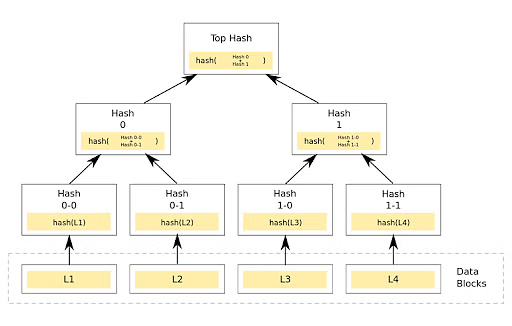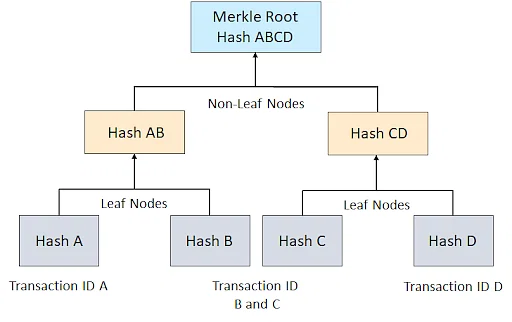Deep Dive into Substrate Storage - Part 1
Blockchains are sometimes referred to as glorified distributed database. Although the statement is only partially true, blockchains fundamentally store data. In addition to data storage blockchains usually keep a verifiable tamper-proof record of the stored data using cryptographic guarantees under certain defined rules. Most blockchains record data using key-value data abstractions and store them as blocks which itself is kept in a key-value database.
This is the first part of the series on Substrate storage. We will build a comprehensive knowledge of how data is handled and stored within the context of Substrate. This part of the series will cover abstractions and primitive data structures supported by Substrate and will mention notable caveats and relevant code implementations.
Help us measure our progress and improve Substrate in Bits content by filling out our living feedback form. It will only take 2 minutes of your time. Thank you!
Overview of storage items
Substrate provides a couple of data structures called storage items which abstract complex concepts away from the runtime engineer. These data structures are versatile and adequately useful for most needs of a runtime engineer. These data structures include the following:
StorageValue: to store any single value, such as a u8.StorageMap: to store a single key to value mapping.StorageDoubleMap: to store values in a storage map with two keys.StorageNMap: to store values in a map with any arbitrary number of keys.
These data structures enable developers to build runtime logic around custom data types. They ease working with runtime APIs and other Substrate FRAME modules.
To learn how to build runtime logic around custom data types check out this guide.
Using StorageValue as the prototypical storage item, we will look at the
implementation details of Substrate storage items.
StorageValue storage items are useful for storing a single unit of data by
the runtime including integer types, objects, or a single collection of
related types.
StorageValue has two main implementations that can be found in the
Substrate repository. One of which is a trait, and the other an "object"
with its related function attributes. Both implementations are employed when
using this storage item. The object is used in the definition of a custom
data type, while the trait is used to manipulate data during a function
execution.
The StorageValue trait is defined like so:
pub trait StorageValue<T: FullCodec> {
/// The type that get/take return.
type Query;
/// Get the storage key.
fn hashed_key() -> [u8; 32];
/// Does the value (explicitly) exist in storage?
fn exists() -> bool;
/// Load the value from the provided storage instance.
fn get() -> Self::Query;
/// Try to get the underlying value from the provided storage instance.
///
/// Returns `Ok` if it exists, `Err` if not.
fn try_get() -> Result<T, ()>;
/// Store a value under this key into the provided storage instance.
fn put<Arg: EncodeLike<T>>(val: Arg);
// ----------- snip ------------------
}
For full implementation, check here.
And the "object" is implemented like so:
pub struct StorageValue<Prefix, Value, QueryKind = OptionQuery, OnEmpty = GetDefault>(
core::marker::PhantomData<(Prefix, Value, QueryKind, OnEmpty)>,
);
impl<Prefix, Value, QueryKind, OnEmpty> crate::storage::generator::StorageValue<Value>
for StorageValue<Prefix, Value, QueryKind, OnEmpty>
where
Prefix: StorageInstance,
Value: FullCodec,
QueryKind: QueryKindTrait<Value, OnEmpty>,
OnEmpty: Get<QueryKind::Query> + 'static,
{
type Query = QueryKind::Query;
fn pallet_prefix() -> &'static [u8] {
Prefix::pallet_prefix().as_bytes()
}
fn storage_prefix() -> &'static [u8] { // <-- TAKE NOTE
Prefix::STORAGE_PREFIX.as_bytes()
}
// ----------- snip ------------------
}
impl<Prefix, Value, QueryKind, OnEmpty> StorageValue<Prefix, Value, QueryKind, OnEmpty>
where
Prefix: StorageInstance,
Value: FullCodec,
QueryKind: QueryKindTrait<Value, OnEmpty>,
OnEmpty: crate::traits::Get<QueryKind::Query> + 'static,
{
/// Get the storage key.
pub fn hashed_key() -> [u8; 32] {
<Self as crate::storage::StorageValue<Value>>::hashed_key()
}
/// Does the value (explicitly) exist in storage?
pub fn exists() -> bool {
<Self as crate::storage::StorageValue<Value>>::exists()
}
/// Load the value from the provided storage instance.
pub fn get() -> QueryKind::Query {
<Self as crate::storage::StorageValue<Value>>::get()
}
/// Store a value under this key into the provided storage instance.
pub fn set(val: QueryKind::Query) {
<Self as crate::storage::StorageValue<Value>>::set(val)
}
// ----------- snip ------------------
}
For full implementation, check here.
To learn how to optimize custom types for performance and security check out previous guides here and here
Key-Value Storage Abstractions - Tries
All data guaranteed by a blockchain is fundamentally stored as a key-value pair. Substrate uses Patricia Merkle Tries as storage abstraction over a key-value database for efficient read and write. Substrate like other blockchains package data as blocks, a process that is efficiently handled based on attributes of a Merkle Trie
What is a Trie (Tree)?
Merkle Trie is a tree data structure in which every "leaf" (node) is labeled with the cryptographic hash of a data and every non-leaf node is labeled with the cryptographic hash of the labels of its child nodes. The root of a Merkle Trie is a cryptographic proof of the entire tree. This allows efficient and secure verification of the contents of a large data structure.

Merkle Trie provides inherent benefits within the context of Blockchain development, including:
-
Efficient data validation: Transactions
hashesare composed to form the Trie and passed among network participants as a block which can be easily verified for tampering from a single root hash. -
Efficient data transport across the network: A block composed of transaction hashes is more efficiently transported over a distributed network than large files containing all transaction-related data.
-
Optimized disk usage: It is much more efficient to validate a few hundred KB of data in memory than several MB of data passed as a linear data type.
-
Isolated data read and write: The design of Merkle enables even the most related data to be updated without tampering with neighboring nodes using a combination of the root of the trie, the height of the leaf in the trie, its orientation (left or right), and its prefix.
Retrieving data in a Trie (Tree)

From the diagram above, we can say that to access Hash D, we have to start
from the Merkle Root Hash ABCD, then through Hash CD, and then to
Hash D. We can re-write this like so: Hash D -> Hash CD -> Hash ABCD
Because a Merkle Trie is an abstraction over a key-value database, hashes of a leaf are an associated key to data stored in the key-value database, and by extension, a hash prefixes the data it represents.
This concept is important for preventing accidental squiggling over data associated with a different account. A data prefix must be unique for each storage item. By default, it is a hash derived from the pallet's unique ID and the name of the object. In certain applications like in smart contracts, you may need to specify an explicit prefix for a storage item to prevent squiggling data related to a single contract account.
Tries Paths and Data Storage
In the simplest description, a trie path is a path taken to reach a leaf in a Merkle Trie. This path is taken to write data and read data for the first time (the path is cached after the first read).
The trie path points to the associated key of the data in the trie. This key usually points directly point to the actual data in the key-value database. Sometimes, the key may further point to other keys in the key-value database, which subsequently points to the actual data in storage.
It is important to note that a trie path may span many levels of a tree and the data retrieved may be stored across several associated keys for a comprehensive data retrieval. an associated key itself may point to a key in the key-value database, which further points to value which is a key to several other values that hold the actual data.
More on path optimization in the next part of this series.
Deep dive into tries - State Proofs and Transaction Data
We can consider state proof to be a summary that sufficiently describes a chunk of data on the blockchain. In reality state proofs are cryptographic has of transactions that have been vetted on by a blockchain consensus.
It can be simply visualized as the root hash derived from a trie of transactions. The hashes of transactions as stated earlier are efficiently recorded as blocks. As such a state can be defined like so:
StateProof = Hash(Block<Transaction>);
State proofs are vital for bridge implementation, to verify a transaction and carry out relevant actions on a remote chain. A remote chain can prove that a transaction is part of a proof submitted like so:
fn get_transaction_from_transaction_id(encoded_proof: Proof, tx_hash: Hash) -> Transaction {
// uses external in snow bridge to decode proof
let decoded_proof = ext::decode_proof(encoded_proof);
let transaction = decoded_proof
.transactions
.iter()
.get(tx_hash);
return transaction;
}
Summary
In this guide, we laid the foundation of how data storage is abstracted in Substrate.
We developed an understanding of the following:
- How storage items are implemented in Substrate.
- Merkle Trie features.
- Accessing data through a Merkle Trie.
To learn more about Substrate storage items and Merkle trie, check out these resources:
Check out the second part of the series here where we covered how the external client manages the key-value database.
Help us measure our progress and improve Substrate in Bits content by filling out our living feedback form. Thank you!